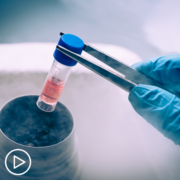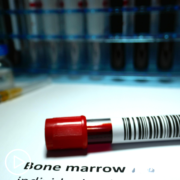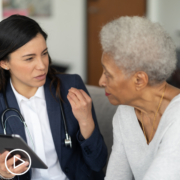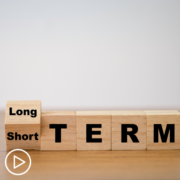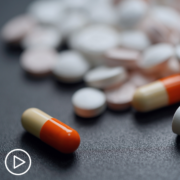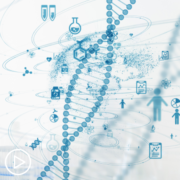BIPOC Patients Living With AML | Mortality Rate and Favorable Genetics from Patient Empowerment Network on Vimeo.
How can acute myeloid leukemia (AML) disparities be addressed in BIPOC groups? Dr. Naval Daver from the University of Texas MD Anderson Cancer Center shares insight. Learn about disparities, molecular profile cytogenetics, and clinical trial benefits.
[ACT]IVATION TIP from Dr. Daver: “Clinical trials are usually developed to improve and move forward the standard of care to better outcomes, as well as knowing that there are many different approaches to getting financial support through different organizations, entities and even potentially through some of the clinical trials, as well as considering becoming volunteer donors for national marrow donor programs, so you can support potential transplant for patients from those communities, which will give them a potential curative option.”
Download Resource Guide
Download Resource Guide en español
See More from [ACT]IVATED AML
Related Resources:
Transcript:
Art:
Dr. Daver, non-Hispanic Black and Hispanic patients with AML have higher mortality rates than non-Hispanic white patients despite more favorable genetics and younger age. How can we address disparities in AML among diverse patient populations?
Dr. Naval Daver:
This is a great question, and then something that I think we all need to spend more time with understanding, and now researchers started to look at the differences in molecular profile cytogenetics presentations among different ethnic backgrounds. It is definitely true that access to care has been more limited in some of these populations that you mentioned, including the Hispanic population and in the non-Hispanic Black population, and I think there are a number of things that may be causing this issue, so I think one there is definitely an economic divide, and especially for large academic centers where patients do have to travel, often stay locally for a period of time to go on the trial, this causes expense, and a lot of times,I think a number of these populations may not have had funding or they may not have the insurance that would cover that particular center.
And so this is one of the big hurdles… second, I think that there is among us communities, sometimes more suspicion or circumspect approach to clinical trials and large academic centers thing, that’s something that hopefully we will be able to change with programs such as the and many, many others that we all are working on, because I think we actually do want to have more inclusion in clinical trials. And we do want to have a more representation of the entire population rather than just a subset.
So hopefully the understanding that clinical trials are usually done with the intent to improve the current standard of care, and randomization includes the current standard of care, and then something that we think could be added to further improve that, and often that many of the clinical trials may even be able to provide some degree of financial support for travel stay.
These could all help maybe some of these populations to access and get on clinical trials, which is one of the big goals for MD Anderson and other large academic centers and investigators such as myself.
I think the third big hurdle, of course, is that even proven extensive transplant, which still remains the most effective long-term curative approach, we don’t have as many donors for the Black and the Hispanic community proportionately than we do for the Caucasian white population.
So I think this is another kind of call to voluntarily consider becoming a donor for the national marrow donor program, for others who are in that community, because we often do find challenges finding ideal donors, and this is a very simple procedure where it…here one, all you have to do is give us a saliva swab, mail it in.. You don’t even have to go to the clinics.
Nowadays, they log it in and if you’re ever called on, it’s just a blood collection, it’s like donating in blood, and you could save somebody’s life to be probably the easiest thing to save, somebody’s like that you will have the opportunity to do in your life.
So I think it’s really, really important that those communities also start signing up and becoming voluntary donors, so I think these are three of the kind of hurdles, of course, there are many, many others, but hopefully with the big push and impetus that’s happening across the world and across the country and across the large academic centers. In the next five to 10 years, we will see more inclusiveness and more representation of all populations proportionally in the ongoing trials and publications.
My activation tip for this is understanding that clinical trials are usually developed to improve and move forward the standard of care to better outcomes, as well as knowing that there are many different approaches to getting financial support through different organizations, entities and even potentially through some of the clinical trials, as well as considering becoming volunteer donors for national marrow donor programs, so you can support potential transplant for patients from those communities, which will give them a potential curative option.

